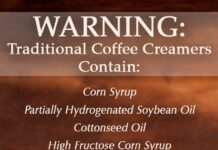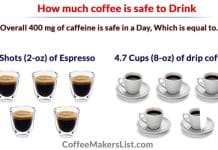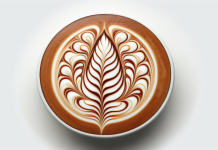Come on a journey with us as we explore the classic percolator coffee brewing method, an old-school way of preparing a rich, flavorful cup of joe. There’s something nostalgic about the rhythmic bubbling and aroma that fills the air as the water percolates through the coffee grounds, creating a deep and satisfying brew. In this article, we’ll take you through the steps of this timeless technique, sharing tips and tricks to achieve the perfect cup of coffee with a touch of tradition. So grab your percolator and let’s get brewing!
Overview of the Classic Percolator Coffee Brewing Method
The Classic Percolator Coffee Brewing Method is a time-honored way of making coffee that has been enjoyed by coffee enthusiasts for many years. It involves using a percolator, a coffee pot specifically designed to brew coffee through a process of circulation and percolation. In this article, we will explore the definition, history, advantages, and disadvantages of using the Classic Percolator.
Definition of the Classic Percolator Coffee Brewing Method
The Classic Percolator Coffee Brewing Method is a brewing technique that involves boiling water in a percolator pot and allowing it to percolate through the coffee grounds multiple times, resulting in a flavorful and robust cup of coffee. The percolator is equipped with a chamber that holds the coffee grounds and a tube through which the water circulates. As the water boils, it is forced up the tube and poured over the coffee grounds, creating a continuous cycle of brewing.
History of the Classic Percolator
The Classic Percolator has a rich history that dates back to the early 1800s. It was first patented in 1818 by a Frenchman named Laurens, and since then, it has undergone various design improvements and modifications. The popularity of the percolator soared during the mid-20th century, becoming a staple in many households and coffee shops. While its usage declined in recent years due to the emergence of other brewing methods, the Classic Percolator still holds a special place in the hearts of coffee enthusiasts.
Advantages of Using the Classic Percolator
One of the main advantages of using the Classic Percolator is the ability to control the strength and flavor of the coffee. The percolation process allows the water to extract the full range of flavors from the coffee grounds, resulting in a rich and bold cup of coffee. Additionally, the Classic Percolator is easy to use and does not require electricity, making it a great option for camping or when power is not readily available.
Disadvantages of Using the Classic Percolator
While the Classic Percolator has its merits, there are also some disadvantages to consider. One common complaint is the tendency to overextract the coffee, leading to a bitter taste. It can also be challenging to maintain the ideal brewing temperature throughout the brewing process, which can impact the overall quality of the coffee. Additionally, the Classic Percolator may not be suitable for those who prefer a milder and less bold coffee flavor.
How the Classic Percolator Works
To fully understand the Classic Percolator Coffee Brewing Method, it is essential to explore its components and the step-by-step brewing process.
Components of a Classic Percolator
A classic percolator consists of several components, including the pot, the percolator basket, the stem and tube, and the perforated lid. The pot holds the water and coffee grounds, while the percolator basket holds the coffee grounds and allows the water to flow through. The stem and tube serve as the conduit for the water to percolate, and the perforated lid prevents coffee grounds from entering the brewed coffee.
Step-by-Step Brewing Process
The brewing process using a Classic Percolator typically follows these steps:
- Assemble the percolator by attaching the basket and the stem to the pot.
- Fill the pot with the desired amount of water, ensuring it does not exceed the fill line.
- Place the percolator basket in the pot, and add the desired amount of coffee grounds. The ratio is usually one tablespoon of coffee grounds per cup of water.
- Attach the perforated lid securely to the pot.
- Place the percolator on a heat source, such as a stove or campfire.
- As the water heats, it will begin to circulate through the tube and percolate over the coffee grounds.
- Monitor the percolation process and adjust the heat if necessary.
- Once the desired strength and flavor are achieved, remove the percolator from the heat source.
- Allow the percolator to cool slightly before pouring the brewed coffee into cups or a serving pot.
- Enjoy the rich and aromatic taste of percolated coffee!
Selecting and Preparing Coffee for Percolation
To achieve the best results with the Classic Percolator, it is essential to carefully select, grind, measure, and store coffee beans.
Choosing the Right Coffee
When selecting coffee for percolation, opt for beans that are medium to dark roast. These roast levels tend to have a bold and robust flavor profile that pairs well with the percolation process. It is also a good idea to choose coffee beans with a consistent size and shape for even brewing.
Grinding the Coffee Beans
The grind size plays a crucial role in the percolation process. It is recommended to use a medium-coarse grind for the Classic Percolator. The medium-coarse grind allows for optimal extraction without overextracting the coffee. Avoid using fine or too coarse grinds, as they may result in uneven extraction or a weak cup of coffee.
Measuring the Coffee Grounds
To achieve the desired strength and flavor, it is important to measure the coffee grounds accurately. A general guideline is to use one tablespoon of coffee grounds per cup of water. Adjust the amount according to personal preference, bearing in mind that using too much coffee can lead to a strong and bitter cup, while using too little may result in a weak and diluted taste.
Storing and Preserving Coffee Freshness
To preserve the freshness of the coffee, store it in an airtight container away from heat, light, and moisture. It is best to buy whole bean coffee and grind it just before brewing for maximum flavor. Avoid storing coffee in the freezer, as the moisture can degrade the quality of the beans. Aim to consume the coffee within two weeks of opening the package for the best taste.
Using a Classic Percolator
Brewing coffee with a Classic Percolator is a straightforward process that requires minimal effort. Follow these steps to make a delicious cup of percolated coffee.
Assembling the Percolator
Before brewing, ensure that all the components of the percolator are clean and in good condition. Attach the percolator basket securely to the pot, making sure it is aligned properly. Check that the stem and tube are securely connected and in place.
Adding Water to the Percolator
Fill the percolator pot with the desired amount of water, taking care not to exceed the fill line indicated on the pot. It is important to use clean and cold water for the best results. The amount of water depends on the number of cups of coffee you intend to brew.
Filling the Percolator Basket
Once the water is in the pot, place the percolator basket on top of the stem. Add the desired amount of coffee grounds to the basket, following the recommended ratio of one tablespoon of coffee grounds per cup of water. Distribute the grounds evenly to ensure even extraction.
Placing the Percolator on the Heat Source
With the percolator assembled and filled with water and coffee grounds, place it on a heat source, such as a stove or campfire. Adjust the heat to medium-high for a consistent and steady brewing process. Avoid using high heat, as it may lead to overheating and overextraction.
Percolation Time and Temperature
Monitor the percolation process as the water heats up and circulates through the tube. The ideal percolation time is typically around 8 to 10 minutes. However, this may vary depending on personal preference and the desired strength of the coffee. Aim to maintain a temperature of around 195 to 205 degrees Fahrenheit throughout the percolation process.
Monitoring and Adjusting the Brew
While brewing with a Classic Percolator, it is essential to observe the percolation process and make adjustments as needed to achieve the desired flavor and strength.
Observing the Percolation Process
As the water percolates through the coffee grounds, you will observe a visual cue known as the “perk.” The perk occurs when the hot water rises through the tube and bubbles up onto the coffee grounds. Keep an eye on the frequency and intensity of the perk to gauge the progress of the brew.
Maintaining the Ideal Temperature
To ensure optimal extraction, maintain the water temperature within the range of 195 to 205 degrees Fahrenheit. If the water temperature drops significantly during the brewing process, adjust the heat source accordingly to bring it back up to the desired range. Similarly, if the water temperature becomes too high, reduce the heat to prevent overextraction.
Adjusting the Percolation Time
The percolation time can be adjusted to achieve different strengths of coffee. If a stronger cup is preferred, allow the percolator to continue brewing for a longer duration. Conversely, if a milder cup is desired, remove the percolator from the heat source earlier. Experiment with different brewing times to find the perfect balance of strength and flavor.
Testing Coffee Strength
To determine the strength of the brewed coffee, you can perform a simple taste test. Pour a small amount of coffee into a cup and taste it. If it is too weak, allow the percolator to continue brewing for a little longer. If it is too strong, remove the percolator from the heat source.
Tips and Tricks for Perfect Percolating
Percolating coffee with a Classic Percolator can be enhanced by implementing various tips and tricks.
Using Filter Discs for a Cleaner Brew
To achieve a cleaner cup of coffee, consider using filter discs in the percolator basket. These discs help prevent fine coffee grounds from entering the brewed coffee, resulting in a smoother taste and texture.
Controlling the Water Temperature
Maintaining the water temperature within the recommended range is crucial for optimal extraction. Use a thermometer to monitor the temperature throughout the brewing process. Adjust the heat source as needed to ensure consistent temperature control.
Avoiding Overextraction
Overextraction can occur if the coffee grounds remain in contact with the hot water for an extended period. To avoid this, remove the percolator from the heat source promptly when the desired strength is achieved. This will prevent the coffee from becoming bitter or overly strong.
Finding the Right Percolation Time
Experiment with different percolation times to find the perfect brewing duration that suits your taste preferences. Start with the recommended time of 8 to 10 minutes and adjust accordingly. Keep in mind that a longer percolation time will result in a stronger and more robust cup of coffee.
Experimenting with Coffee Grinds
Varying the grind size of the coffee grounds can significantly impact the taste of the brewed coffee. Try different grind settings, such as a slightly coarser or finer grind, to discover the flavor nuances that appeal to you the most.
Cleaning and Maintenance
Proper cleaning and maintenance of the Classic Percolator are essential for prolonging its lifespan and ensuring optimal brewing performance.
Cleaning the Percolator After Each Use
After each use, allow the percolator to cool completely before disassembling it for cleaning. Carefully remove the basket, stem, and tube and rinse them with warm water. Use a soft brush or sponge to clean the inside of the pot, paying attention to any coffee residue. Thoroughly rinse all components and allow them to air dry before reassembling the percolator.
Descale Regularly to Remove Mineral Buildup
To prevent mineral buildup and to maintain the percolator’s performance, it is important to descale the pot regularly. Fill the pot with a mixture of equal parts water and vinegar and let it sit for about 30 minutes. Then, rinse the pot thoroughly with clean water. This process will remove any mineral deposits and ensure a clean and efficient percolation process.
Replacing Parts and Seals
Over time, some parts of the Classic Percolator may wear out or become damaged. Inspect the percolator regularly and replace any worn or broken parts. It is also important to check the seals and gaskets for signs of deterioration to ensure a proper seal and prevent leaks.
Storing the Percolator
When the percolator is not in use, store it in a clean and dry place. Make sure all components are dry before assembly to prevent the growth of mold or mildew. Avoid storing the percolator with the lid tightly closed to allow for adequate ventilation.
Comparison with Other Brewing Methods
The Classic Percolator has its unique characteristics that differentiate it from other coffee brewing methods. Let’s explore how it compares to popular brewing methods such as the Drip Coffee, French Press, and Espresso Machine.
Classic Percolator vs. Drip Coffee
Unlike the Classic Percolator, which allows the water to boil and circulate through the coffee grounds repeatedly, drip coffee relies on gravity to extract the coffee flavors. Drip coffee machines feature a water reservoir, a heating element, and a drip filter. While drip coffee provides convenience and a smoother taste, it may lack the robustness and intensity found in percolated coffee.
Classic Percolator vs. French Press
Both the Classic Percolator and the French Press are known for producing robust and full-bodied coffee. However, they differ in terms of the brewing process. The Classic Percolator passes hot water through the coffee grounds multiple times, while the French Press uses immersion brewing, where coffee grounds soak in hot water before being separated by a mesh filter. The French Press tends to produce a richer and more nuanced flavor, while the percolator offers a bolder and more traditional taste.
Classic Percolator vs. Espresso Machine
Espresso machines are often associated with strong and concentrated coffee. They use high pressure to force water through finely ground coffee, resulting in a highly concentrated brew. In contrast, the Classic Percolator does not produce espresso but rather a more robust and aromatic cup of traditional coffee. An espresso machine is designed for espresso-based beverages, such as lattes and cappuccinos, while the Classic Percolator is ideal for those who enjoy a classic, flavorful cup of coffee.
Common Mistakes to Avoid
To achieve the best results with the Classic Percolator, it is important to be aware of common mistakes that can affect the quality of the brewed coffee.
Overheating the Percolator
One common mistake is overheating the percolator, which can lead to overextraction and a bitter taste. It is essential to control the heat source and maintain a consistent brewing temperature within the recommended range.
Using Incorrect Grind Size
Using the wrong grind size can result in uneven extraction and affect the overall flavor of the coffee. Avoid using too fine or too coarse grinds. Aim for a medium-coarse grind for optimal results with the Classic Percolator.
Overextracting the Coffee
Overextracting the coffee occurs when the brewing process continues for too long, leading to a bitter and unpleasant taste. Monitor the percolation time closely and remove the percolator from the heat source promptly once the desired strength is achieved.
Using Incorrect Coffee-to-Water Ratio
Using too much or too little coffee grounds can have a significant impact on the taste of the coffee. Follow the recommended ratio of one tablespoon of coffee grounds per cup of water and adjust according to personal preference.
Conclusion
The Classic Percolator Coffee Brewing Method offers a timeless and traditional way to enjoy a bold and flavorful cup of coffee. Its rich history and unique brewing process make it a favorite among coffee enthusiasts. While it may have some disadvantages, such as the potential for overextraction and difficulty in temperature control, the Classic Percolator remains a beloved brewing method cherished for its robust and aromatic taste. By following the tips and tricks provided, coffee lovers can perfect their percolation skills and savor the delightful flavors that this brewing method has to offer. So, why not give the Classic Percolator a try and enjoy the timeless taste of percolated coffee?







































